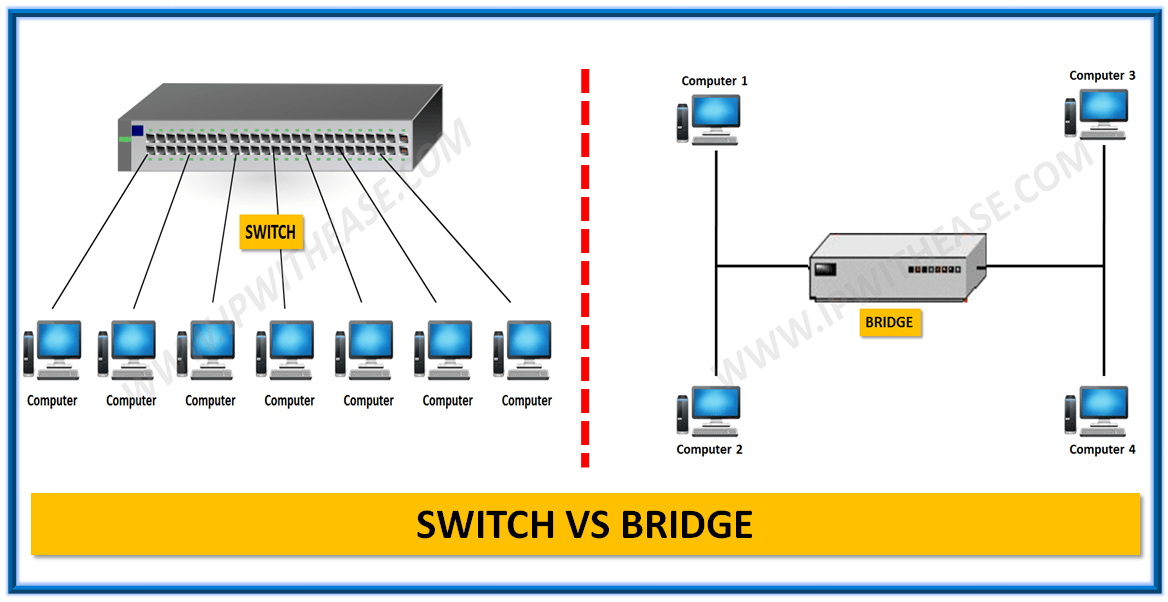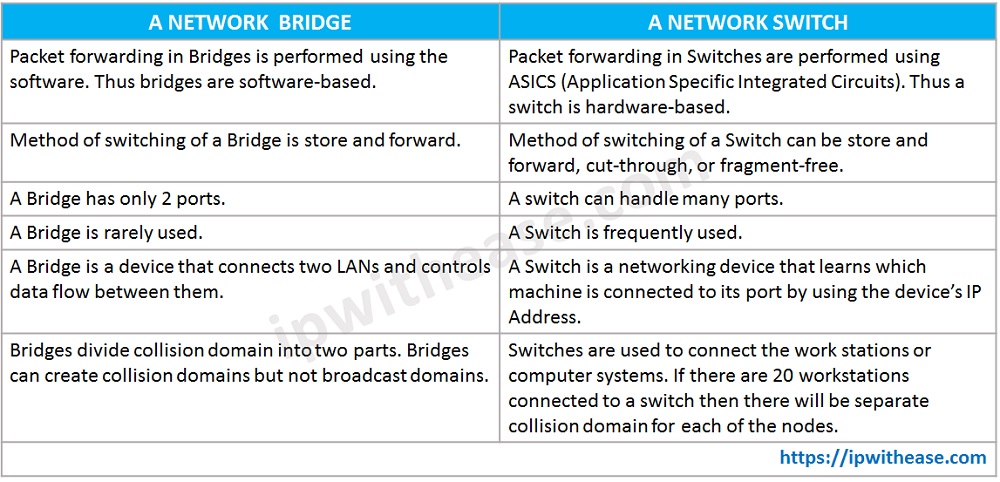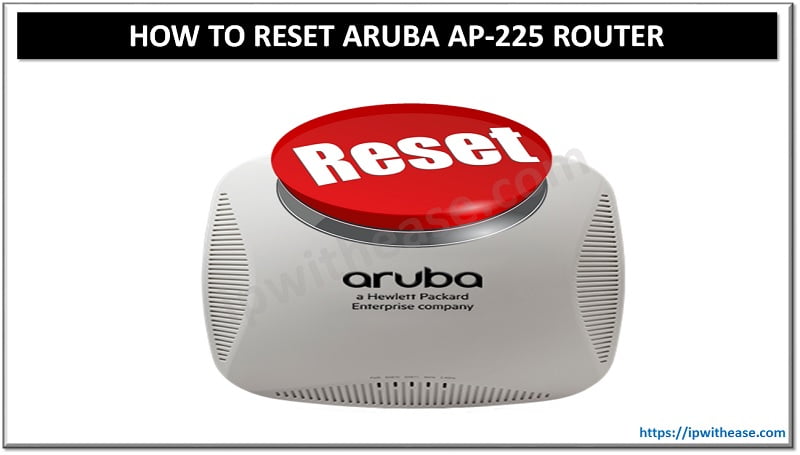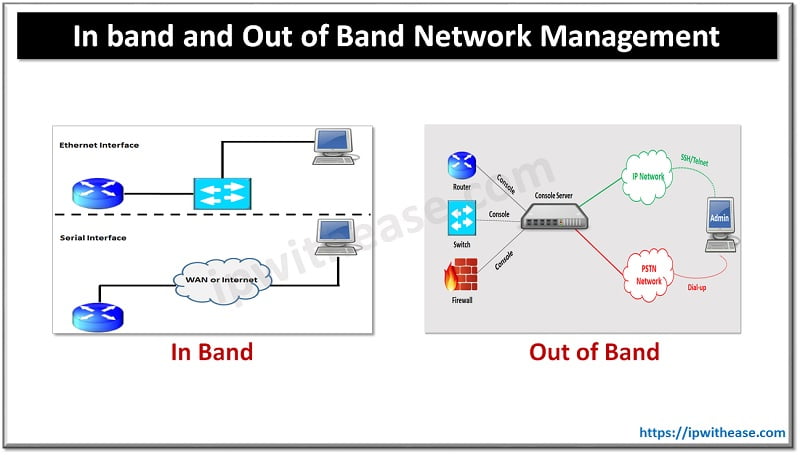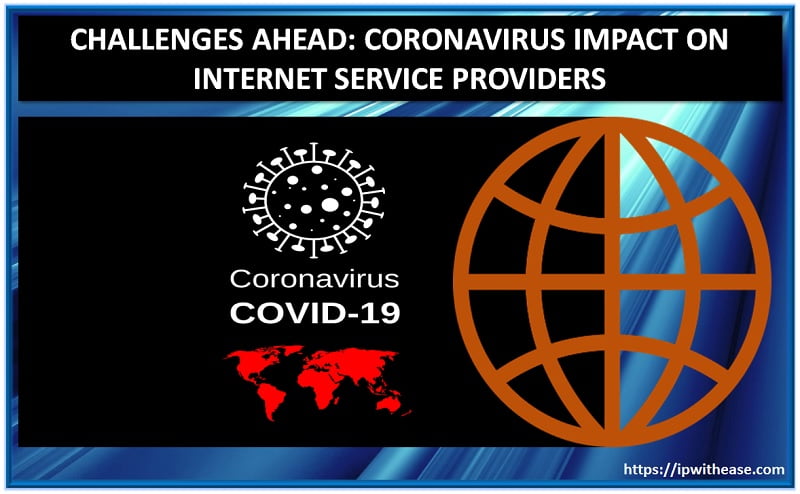Bridges & Switches
Bridges and Switches are pretty similar, both operate at the Data Link layer (Layer 2) and both can filter data so that only the appropriate segment or host receives a transmission.
Both filter packets based on the physical address (AKA MAC – Media Access Control – address) of the sender/receiver although newer switches sometimes include the capabilities of a router and can forward data based on IP address (operating at the Network Layer) and are referred to as IP Switches.
Often the desired results could be achieved using either a switch or a bridge but “in general” bridges are used to extend the distance capabilities of the network while minimizing overall traffic, and switches are used to primarily for their filtering capabilities to create multiple, smaller virtual LAN’s out of one large LAN for easier management/administration (VLAN’s). But Switches are considered as superior devices than Bridges.
The major differences between a network bridge and switch are as follows:
Difference between Bridge and Switch –
| A NETWORK BRIDGE | A NETWORK SWITCH |
|---|---|
| Packet forwarding in Bridges is performed using the software. Thus bridges are software-based. | Packet forwarding in Switches are performed using ASICS (Application Specific Integrated Circuits). Thus a switch is hardware-based. |
| Method of switching of a Bridge is store and forward. | Method of switching of a Switch can be store and forward, cut-through, or fragment-free. |
| A Bridge has only 2 ports. | A switch can handle many ports. |
| A Bridge is a device that connects two LANs and controls data flow between them. | A Switch is a networking device that learns which machine is connected to its port by using the device’s IP Address. |
| Bridges divide collision domain into two parts. Bridges can create collision domains but not broadcast domains. | Switches are used to connect the work stations or computer systems. If there are 20 workstations connected to a switch then there will be separate collision domain for each of the nodes. |
![]()
Download the difference table here.
Related- Networking Scenario Based Interview Questions
ABOUT THE AUTHOR

I am here to share my knowledge and experience in the field of networking with the goal being – “The more you share, the more you learn.”
I am a biotechnologist by qualification and a Network Enthusiast by interest. I developed interest in networking being in the company of a passionate Network Professional, my husband.
I am a strong believer of the fact that “learning is a constant process of discovering yourself.”
– Rashmi Bhardwaj (Author/Editor)

